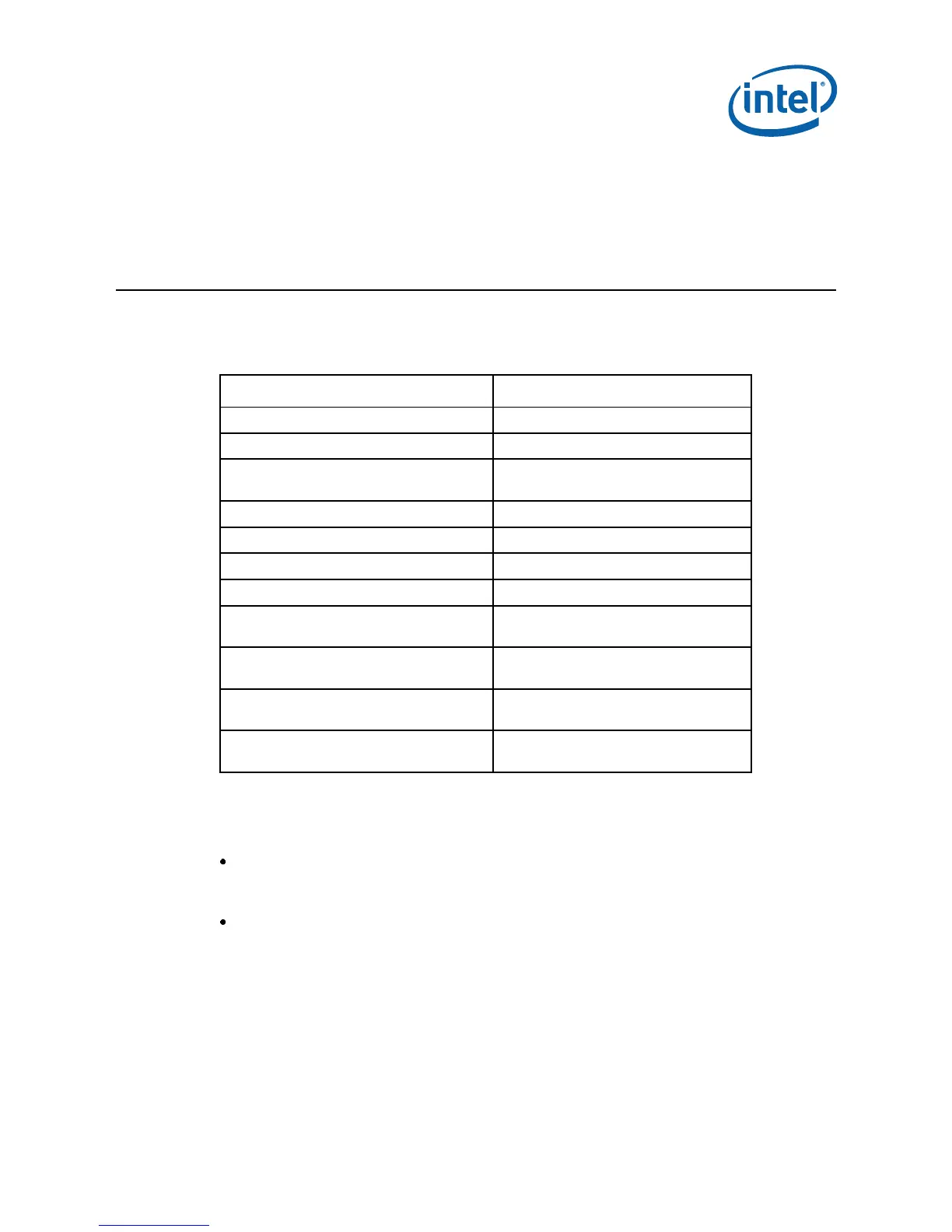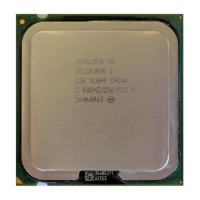Fan Performance for Reference Design
Thermal and Mechanical Design Guidelines 125
Appendix GFan Performance for
Reference Design
The fan power requirements for proper operation are given Table 7-6.
Table
7-6. Fan Electrical Performance Requirements
Requirement Value
Maximum Average fan current draw 1.5 A
Fan start-up current draw 2.2 A
Fan start-up current draw maximum
duration
1.0 second
Fan header voltage 12 V ±5%
Tachometer output 2 pulse per revolution
Tachometer output signal Open-collector (open-drain)
PWM signal input frequency 21 kHz to 28 kHz
PWM signal pull up in fan 3.3 V (recommended max)
5.25 V (absolute max)
PWM signal current source Imax = 5 mA
(short circuit current)
PWM signal maximum voltage for logic
low
VIL = 0.8 V
PWM compliant function RPM must be within spec for specified
duty cycle
In addition to comply with overall thermal requirements (Sections 5.1.1 and 6.2), and
the general environmental reliability requirements (Sections 5.2 and 6.3) the fan
should meet the following performance requirements:
Mechanical wear out represents the highest risk reliability parameter for fans. The
capability of the functional mechanical elements (ball bearing, shaft, and tower
assembly) must be demonstrated to a minimum useful lifetime of 57,000 hours.
In addition to passing the environmental reliability tests described in Sections 5.2
and 6.3, the fan must demonstrate adequate performance after 7,500 on/off
cycles with each cycle specified as 3 minutes on, 2 minutes off, at a temperature
of 70 °C.
See the Fan Specification for 4-wire PWM Controlled Fans for additional details on the
fan specification.

